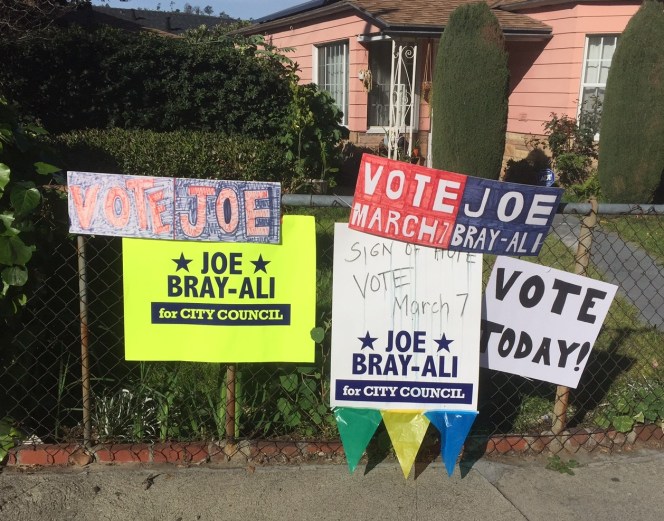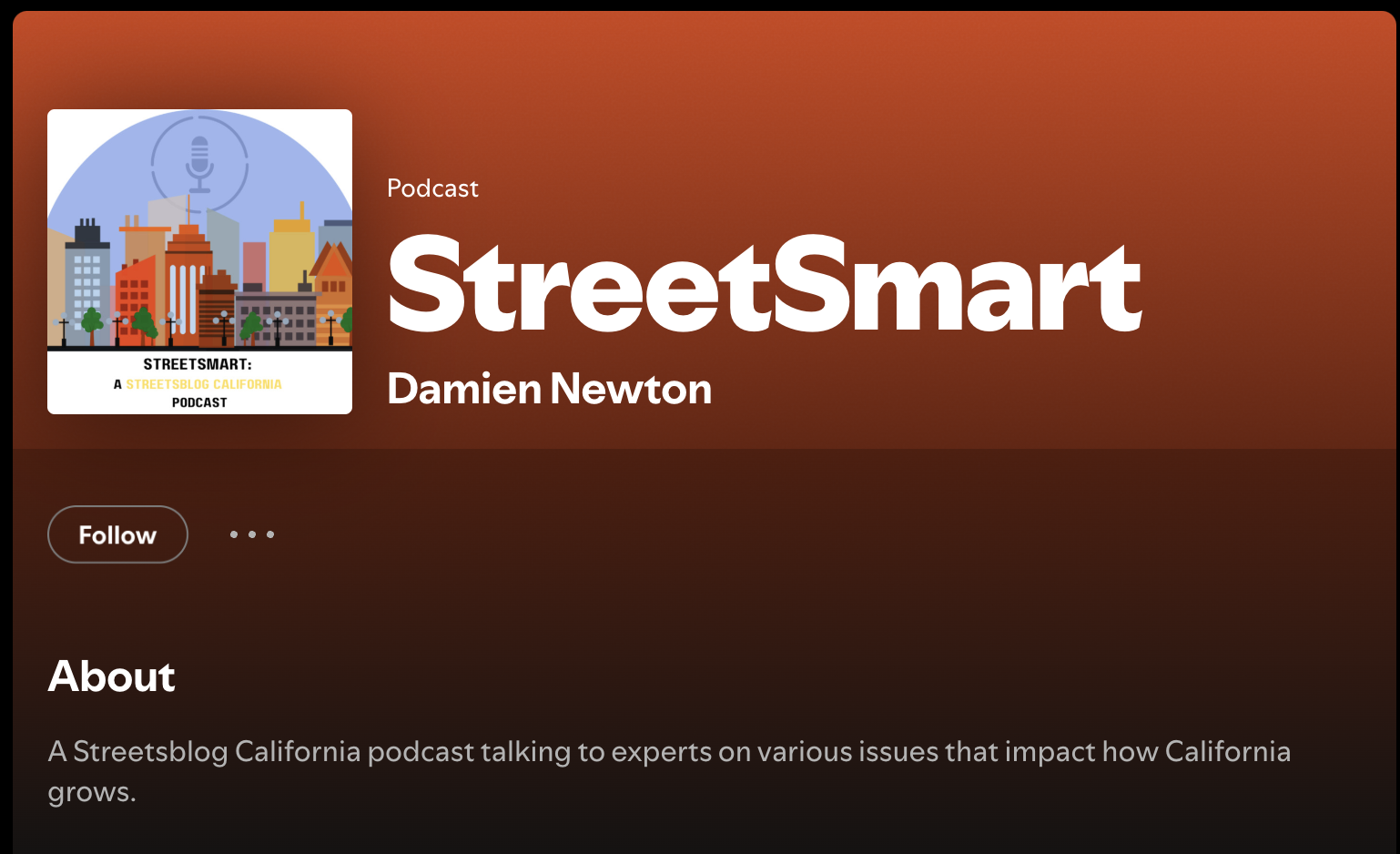Yesterday's 2017 primary election had plenty of good news for advancing livability in Los Angeles. Unfortunately, voter turnout was dismal, and even lower than expected. Preliminary figures show that only 11.29 (KPCC) or 11.45 percent (L.A. Times) of eligible registered voters cast ballots. KPCC points out that this is three percent lower than in 2013, the last off-year primary.
The election saw L.A. City incumbents returning to power. This is a mixed bag that includes livability champions, councilmembers Mike Bonin, Joe Buscaino, and Bob Blumenfield, and some mostly good but sometimes disappointing voices, including Mayor Eric Garcetti and councilmember Mitch O'Farrell, and some vocally anti-bike councilmembers: Paul Koretz and Curren Price. One race still hangs on a razor-thin margin, where anti-bike councilmember Gil Cedillo is hovering at nearly 51 percent, with enough votes remaining uncounted to swing the race into a runoff with bicycle community leader Joe Bray-Ali.
At the time of publication, the L.A. County Clerk elections website reports that incumbent Cedillo came in first, garnering 6,702 votes out of 13,147 cast in the Council District 1 race, which is 50.98 percent of the votes cast. To win the primary outright, Cedillo needs over 50 percent of the vote; under current totals that is 6,574 votes. Cedillo's current tally gives him a 128-vote margin. If Cedillo receives less than 50 percent, he will face Bray-Ali in a May 16 runoff.
While 100 percent of precincts have been tallied, there is still a trickle of hundreds of uncounted ballots to be tallied in the coming days. These include provisional ballots and write-ins. While the total number of uncounted ballots is not clear, the Bray-Ali campaign asserts there are "likely 2,000 or so ballots left to process." The uncounted ballots are almost definitely enough to erase Cedillo's margin, but they could also maintain or add to his lead. In any case, it is still too tight to call the race definitively. The picture should be clearer soon, as the County Clerk prepares final results, which are due by the end of the month. If the margin holds or shrinks, a re-count could be in order.
Joe Bray-Ali, who under current totals came in second with 4,750 votes (36.13 percent), stated, "This [election] is by no means over until we've seen the substantial number of ballots still left to count. We're preparing for a runoff and making sure the votes are counted accurately and fairly."
Measure S, the so-called "Neighborhood Integrity Initiative" which would have banned various types of development, was defeated by a wide margin: 69 percent "no" votes at press time. This leaves Los Angeles with, in the words of SBLA Communities Editor Sahra Sulaiman, our current "terrible, horrible" status quo. While Measure S passage would have made issues worse, defeating Measure S does not solve segregation, exclusion, gentrification, homelessness, evictions, NIMBYism, outdated plans, anti-development litigation, influence peddling, mansionization, excessive parking requirements, or a host of other pressing planning and development issues.
Nonetheless it is important that a broad coalition - from labor to business to housing to bicyclists and more - came together to defeat this misleading measure. It is also good news to hand AIDS Healthcare Foundation Michael Weinstein yet another defeat, after his opposition to Metro's Measure M and his wrongheaded state propositions 60 and 61.
Lastly, the quarter-cent sales tax for countywide homeless services Measure H squeaked through to victory. Measure H needed a two-thirds super majority, and current votes are tallied at 67.44 percent. Los Angeles has once again bucked the California taxpayers revolt narrative, proving that its residents are willing to tax themselves to solve huge city issues including housing and transportation and education.






